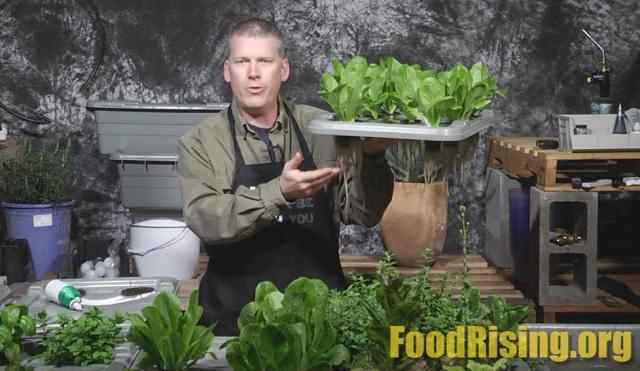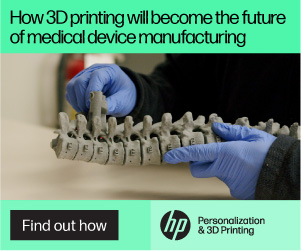 It’s really incredible watching as new applications for 3D printing emerge on the scene, applications which one would never have imagined being possible. We’ve already seen 3D printed food, but it’s an area that has a long way to go before it’s anywhere close to being considered a mainstream tool for the culinary market. With that said, 3D printing has already touched another area related to food, an area which could really benefit from the technology immediately: that of food production.
It’s really incredible watching as new applications for 3D printing emerge on the scene, applications which one would never have imagined being possible. We’ve already seen 3D printed food, but it’s an area that has a long way to go before it’s anywhere close to being considered a mainstream tool for the culinary market. With that said, 3D printing has already touched another area related to food, an area which could really benefit from the technology immediately: that of food production.
We’ve already extensively covered the 3D printed hydroponics system called 3DPonics. They are changing the way people think about growing their own vegetables with the help of an open source community of 3D printing enthusiasts. Additionally, last month we covered Natural News’ new Food Rising initiative to transform the availability, safety, and production methods of food and medicine around the world.
This weekend at the Health Freedom Expo in Naples, FL, Natural News unveiled additional details pertaining to their Food Rising initiative, a mini-farm grow box with 3D printable components. Officially to be announced tomorrow, the Food Rising initiative features free designs for a food production system which features easily attainable as well as 3D printable components. This new technology is able to produce food at extremely low costs, without the need for power, making it perfect for both the developed and developing world. Some of the key benefits of the system are as follows:
- 100% EMP-proof, no circuit boards required.

- Food can be grown at waist height, meaning no need to bend over.
- Uses just 5% of the water needed in traditional agriculture.
- Requires no electricity.
- Key parts needed for the system can be found anywhere in the world. These include 3D printable parts as well as items such as paper clips and pencil erasers.
- No weeding required.
- No soil required, meaning only half the space is needed for food production.
This incredible system relies on one key component: a self-watering float valve, which has been designed based on 3D printable and commonly scavenged or acquired parts. These parts include a paper clip, pencil eraser, a garden hose washer, and a common vitamin bottle. This means that anyone with access to a 3D printer and t-glase filament, which is a PET-based material offered by taulman3D, can create this potentially revolutionary system. A typical organic head of lettuce you would have once paid $3 to $4 for can be grown for under 10 cents.
As mentioned previously, this system will officially be unveiled on the FoodRising.orgwebsite tomorrow, at which time the free 3D printable models will be available to anyone with an internet connection. Additionally, a DIY video showing just how easy it is to construct this mini-farm grow box system will also be made available on the site.
Food Rising is currently trying to donate 250 of these grow systems to schools across the United States by accepting donations from the public. Thus far enough money has been raised for them to present 207 of these systems to schools. If you’d like to help Food Rising raise the additional funding required to reach their goal, you may donate here; if you are part of a school, church, or other community organization looking for a system, you may request a donation here.
Let us know your thoughts on the Food Rising mini-farm system. Discuss in the Food Rising forum thread on 3DPB.com. Check out the video below of ‘The Health Ranger’ presenting this technology to the public.
Subscribe to Our Email Newsletter
Stay up-to-date on all the latest news from the 3D printing industry and receive information and offers from third party vendors.
You May Also Like
3D Printing News Briefs, April 13, 2024: Robotics, Orthotics, & Hypersonics
In 3D Printing News Briefs today, we’re focusing first on robotics, as Carnegie Mellon University’s new Robotics Innovation Center will house several community outreach programs, and Ugogo3D is now working...
Rail Giant Alstom Saves $15M with 3D Printing Automation Software 3D Spark
3D Spark has entered into a three-year deal with the rail giant Alstom. Alstom, a transport behemoth with annual revenues of $16 billion, specializes in the manufacture of trains, trams,...
Meltio Expands Global Reach with New Partnerships in the Americas and Europe
Spanish 3D printing manufacturer Meltio has expanded its sales network across the globe. With the addition of three new partners in the United States, Brazil, Argentina, and Italy, Meltio aims...
3D Printing Webinar and Event Roundup: April 7, 2024
Webinars and events in the 3D printing industry are picking back up this week! Sea-Air-Space is coming to Maryland, and SAE International is sponsoring a 3D Systems webinar about 3D...
































